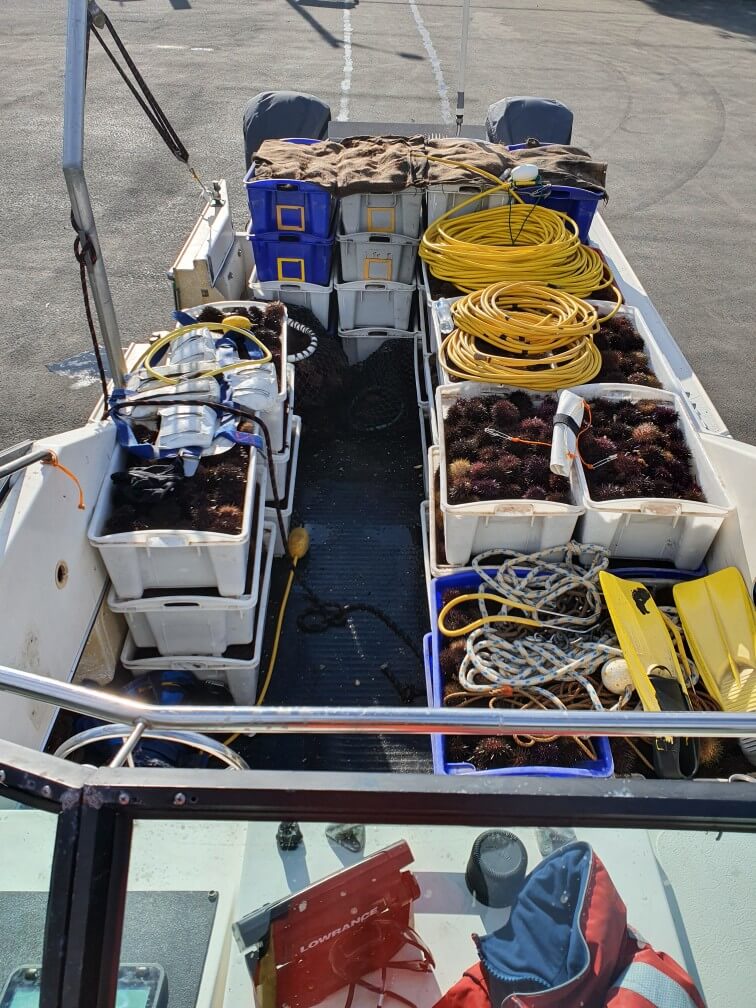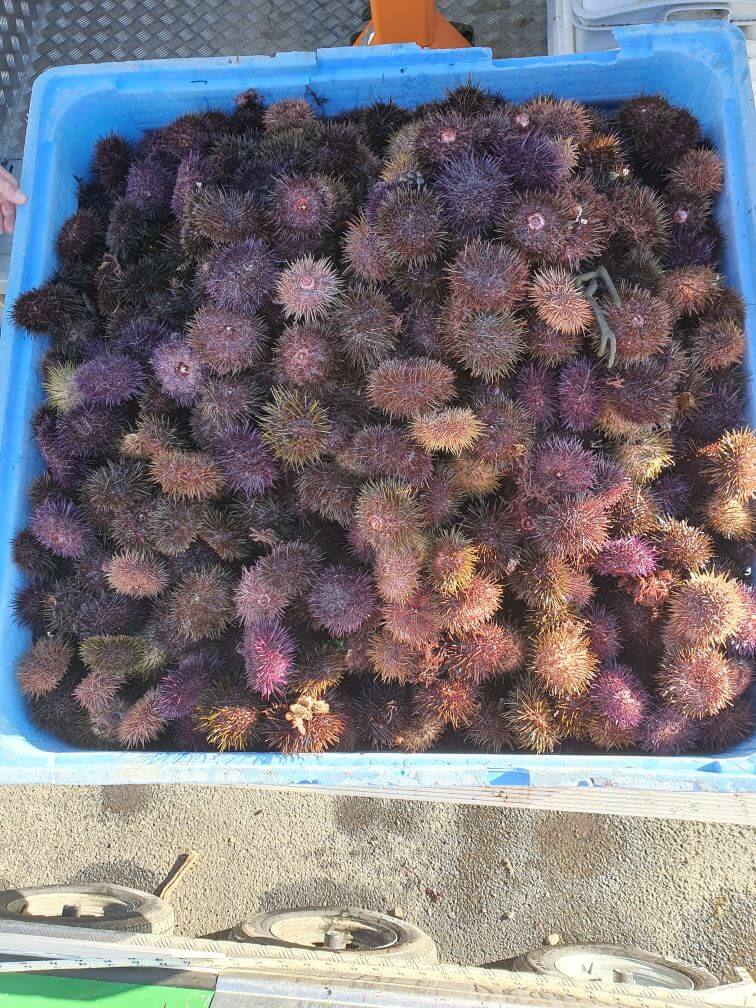One of the key threats to Red handfish survival is the loss and degradation of their habitat. This could happen for several reasons, including climate change, land-based pollution or siltation, too little, too much, or the wrong nutrients. An increase in Short Spined Urchins (Heliocidaris erythrogramma) has had the clearest impact on Red handfish habitat in recent times though, leading to a decrease in seaweed and the persistence of barrens (areas devoid of kelp). Given Red handfish use seaweed/seagrass as shelter from predators and to lay their eggs on, increases in urchin numbers pose a very serious threat to their survival.
Managing the habitat was also an important component in the lead-up to the release of juvenile Red handfish in these areas (see more HERE).
Increases in native urchins have occurred at one of the Red handfish sites previously; in late 2018 the Institute for Marine and Antarctic Studies (IMAS) divers working under the direction of a scientific team at IMAS, CSIRO and the Department of Primary Industries, Parks, Water and Environment (DPIPWE) and in consultation with the National Handfish Recovery Team, removed approximately 6000 urchins.
Ongoing habitat surveys through the Reef Life Survey Foundation, as well as a noticeable decrease in habitat and an increase in urchin numbers again led to the decision to intervene and reduce urchin densities.
Why have urchin numbers increased?
In short, we are not sure what the drivers behind increases in urchin number are. Typically, increases in abundances of urchins are linked to release from predation (i.e. removal from large predators like lobsters, which may also keep urchin number in check naturally), but there may be a combination of factors at work such favourable conditions for larval survival and settlement.
What are we doing about it?
In August 2020, a collaborative effort between the Tasmanian Commercial Divers Association (TCDA), led by President Renison Bell, and IMAS, worked alongside DPIPWE to tackle the increase in urchins at the two Red handfish sites.

TCDA divers typically harvest several different species, including the native (short-spined) urchin (H. erythrogramma), periwinkles, and Undaria pinnatifida, the introduced Japanese kelp). The TCDA also harvests the long spined sea urchin (Centrostephanus rodgersii), which has moved from NSW with the warmer east coast waters and is well known for its threat to Tasmanian kelp ecosystems through creation of extensive barrens from over-grazing.
In August 2020, a team of TCDA divers removed an incredible 1276 kg (almost 17000 native urchins) across both sites.
Although not all the urchins were of harvest quality, Renison revealed that contributing to a good cause and helping Red handfish populations was worth their effort.
The future
It is hoped that this reduction in urchin densities will at least temporarily prevent the immediate loss of kelp habitat at the Red handfish sites. Ongoing monitoring of habitat and management of urchin numbers is essential until we can tackle the cause of this imbalance in the ecosystem through increases in scientific knowledge and a better understanding of the processes at work.
More information:
TCDA: https://www.facebook.com/TasmanianCommercialDivers/



Images courtesy of Tasmanian Commercial Divers Association